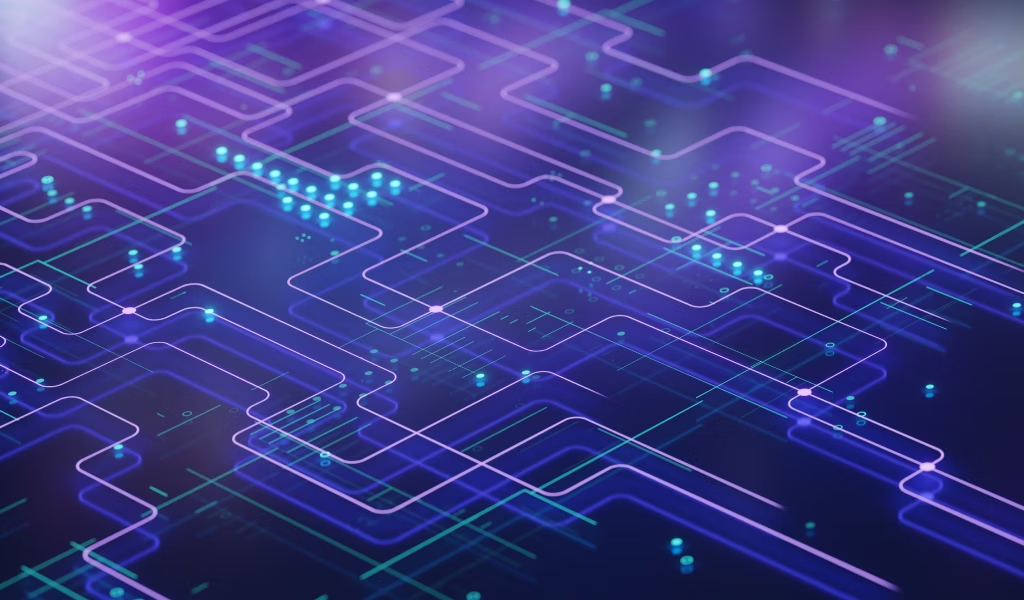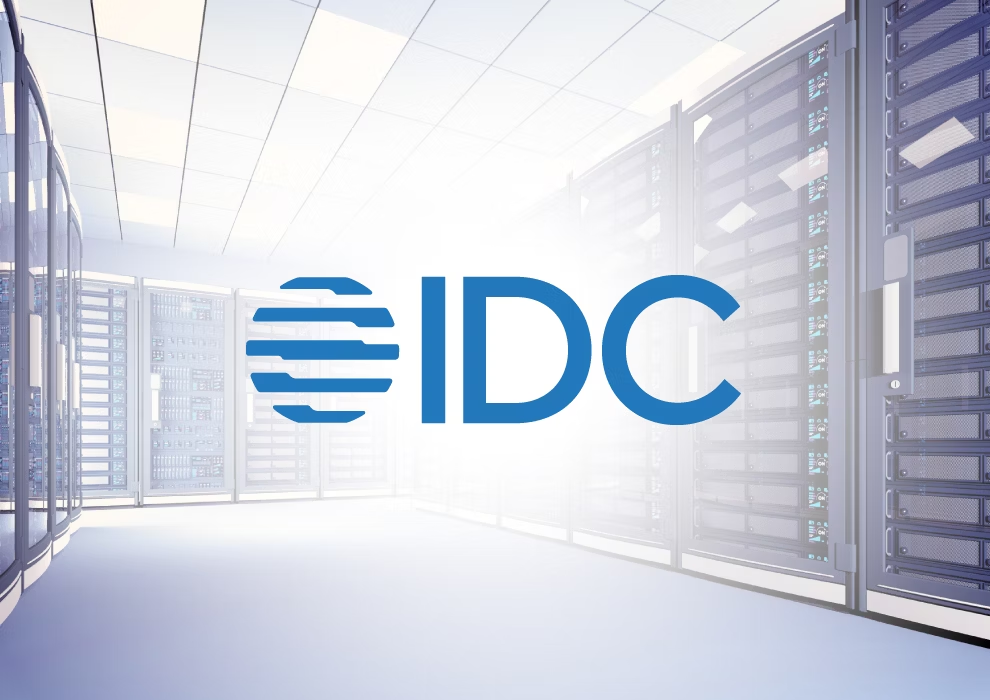Cheetah RAID Talks Scalable Storage at the Edge
TechArena podcast hosted by Allyson Klein and Jeniece Wnorowski
TechArena host Allyson Klein and Jeniece Wnorowski of Solidigm chat with Doug Emby, Vice President of Cheetah RAID about the innovative data storage solutions his company is delivering to edge environments for applications like the entertainment industry, defense, autonomous vehicles, and oil and gas exploration. Hear how innovative SSD designs from Solidigm help provide a foundation for storage performance and efficiency.
Listen to the podcast
Audio Transcript
This transcript has been edited for clarity and conciseness.
Narrator: Welcome to The TechArena, featuring authentic discussions between tech's leading innovators and our host, Allyson Klein. Now, let's step into the arena.
Allyson Klein: Welcome to The TechArena's Data Insights Series. We're back for another episode, and that means I'm back with my co-host, Jeniece Wnorowski. Welcome back to the program. Jeniece, how are you doing?
Jeniece Wnorowski: Hi, Allyson, thank you for having me. It's great to be back.
Allyson: So Jeniece, why don't you give us an update on what is the latest in terms of your travels and engagement with the data industry?
Jeniece: Well, it's been a whirlwind, but it's been a lot of fun, traveling to different shows, learning a lot about AI, learning a lot about what our partners are doing. And there's one partner in particular right now, which is doing some very cool stuff: AI at the edge. And today we have a guest that I've been wanting to bring on the show for some time now. We are gonna speak with Doug Emby from Cheetah RAID. Doug is the VP of Sales and Business Development for Cheetah RAID and just has some pretty cool things to talk with us today.
Allyson: Welcome to the program.
Doug Emby: Thank you for having me.
Allyson: So, Doug, let's just get started. Cheetah RAID is known for delivery of storage into fast-paced and extreme environments. And I love the stories about where your technology goes. Can you share a bit about your customers and why they're selecting Cheetah RAID for their solutions?
Doug: Yeah, I think that's a good question because a lot of the companies or vendors that are out there can't supply these particular little niches, for instance, to military or media entertainment, autonomous vehicles, and oil and gas exploration. That's kind of where we kind of come in and we're not a cookie cutter type server company. We'll ask the customers exactly what they need or what they're looking for. And we will actually design a product specifically designed for them. So it's fits into their environment, exactly what they're looking for.
Jeniece: And Doug, you mentioned some military customers you have and even film and television, so you have a pretty broad array of partners. But can you comment a little bit on the unique challenges in delivering those products? You mentioned you'd customize them, right? But what are some of the challenges in delivering those products to those types?
Doug: Sure. What's kind of interesting is they all have the same problem, which is good for us. The biggest problem that they have is offloading the data. [Take] for instance, military aircraft. We have these installed on the U.S. Navy planes. And when they're mid-flight collecting data, they want to be able to land, or even mid-flight, be able to pull the drives out. But it's not a good idea just to pull physical drives out. So what we did is we designed a drive canister that houses four drives. Or it could be more, we have other ones that hold more drives. But in this case, it's four physical drives. So that allows them just to pull out a drive canister versus a physical drive. That saves them a lot of time. It expands the life of the drives, because physical drives are not made to be pulled out and put back in, that type of thing. You put them in once and you leave them in until they fail. So that's a big thing for the military, is to really get that data offloaded as fast as possible, so they can bring it to a ground base to be analyzed. Same with autonomous vehicles that we have. What we did is we designed a product that's really small, that's 15 pounds, that will sit in the back of a trunk with a drive canister; four physical drives. And then in their lab, they would have a two-use server with three canisters. So this allows them to go out, do whatever they're doing, collecting data, driving the streets, and they would pull into the garage, actually pull that drive canister, put a fresh one in, out the door it goes. Now, what they used to do was go out, collect the data, pull into the garage, run a network cable over, and actually start offloading, which could take a very long time. That's a vehicle sitting in the garage, not doing anything. So you're losing money, basically, or losing a day, just trying to offload data. So, again, that has helped them. And it's the same with the film industry. They go out into a remote location, they're filming, they may fill up a drive or two. Now they just pull a drive canister, put a fresh one in, they continue filming. They drop the drive canisters into a case, and they FedEx it to the editors or whoever gets it at that point. And they can actually see the data live instantly versus trying to push it over the network, which could take days, weeks. Because of the size of the capacities of these drives these days, especially with Solidigm, you're building a 61TB drive just in one of our canisters, that's 244TB [of data storage]. In our 2U server, that's over 732TB [of data storage]. So that's a lot of data that push over a network. It could take a week if not longer.
Jeniece: So that's actually super, super interesting, Doug, because one of the challenges that we've seen with some of our partners is with AI, how quickly can I get access to this data? I can't afford any downtime, can't afford any interruptions, and how quickly can I outflow this as fast as possible? Can you tell us a little bit about what has changed in the past couple of years even with some of these new workloads you're seeing and how that's driving new customer requirements?
Doug: Well, that's just basically the evolution of drives that are out there. Everything from spinning drives to SATA, SaaS, now NVMe, that's where everything is. Because everybody wants the high performance. No one seems to want to wait anymore these days. NVMe is the latest and greatest product on the market, as you know, and it's really driving the industry. Prices have come down to equal SATA or even in some cases, spinning drives [HHDs]. So that's just a real big piece of it. So the capacities are getting larger, meeting the spinning drives, for instance. Reliability is a big thing. The form factors are a big thing that has made a lot of changes. And the biggest thing is the security features. As we are today, security is just a high priority. That allows us, especially with your drives, Jeniece, we can actually secure them, do encryption on them, especially with the Navy. We can secure those drives, transport them, and not worry about getting [them] into the wrong hands and somebody looking at that data.
Allyson: Now, Doug, what you're describing right now are a lot of broad use cases across military, film industry, other places that need that canister approach. What have you seen change in the use cases over the last couple of years that would change the way that storage is being used? And you talked about the difference with the network cable, but are there other things in play in the way that these customers are demanding access to data that has changed the way that you work with your customers?
Doug: Yeah, well, what we implemented on our 2U with the three canisters, we put a button on the front. That allows you to press that button and hot swap. So you don't have to shut your servers down anymore. If you're going to pull a drive or multiple drives, you have to shut that whole server down. And shutting a server down is a lot of time to bring it down and then bring it back up to where we can actually just press a button. It'll actually shut that drive canister off or all three of them if you press all three buttons. So now we're doing that live. The server is not shut down. You're pulling that drive canister. You put the drive canisters, the fresh ones, back in. They automatically come online and now you're running again. That's just another way how we're saving time and making it as simple as possible for the end users.
Allyson: Now you talked a little bit about the SSD technology advancing and bringing some new capabilities to the table. Can you talk a little bit about what has happened in the SSD arena that makes them the no-brainer solution for you for the latest solutions you're delivering to market? And obviously, you've got a relationship with Solidigm. Do you want to comment on how you have worked with Solidigm to deliver solutions to your customers?
Doug: Sure. Solidigm has been a great partner in this whole thing. And with them coming out with a 61TB drive, that gets a lot of attention. Again, I keep going back to the military and even the media and entertainment world, because they want more capacity. A lot of what has changed is the NVMe drives. It's just a high performance. Even in the military world, you can't use a spinning drive in an aircraft, for instance, as soon as it lands, the drive is crashed or whatever. But using NVMe drives, you're gonna get that high performance that you just can't equal in a spinning drive or a SATA drive. You need multiple drives to equal the performance of a physical NVMe drive. That is just huge, what Solidigm is doing. Giving us performance, giving us capacity, giving us the encryption, just hands down, it's just superior drives over anything else that we've used in the past.
Jeniece: Well, thanks for saying that, Doug. We appreciate that. We definitely are excited about the capacity and the different use cases and really kind of helping our partners, especially partners like you who have a system that's incredibly unique and different and running high mission-critical workloads. So we're excited to hopefully bring out even bigger and faster drives in the near future, if we can believe that. And we're excited about continuing our collaboration here. But Doug, I've always get the question, gosh, this Cheetah RAID solution is so unique and different, but who do I reach out to? How do I learn more about the solution? So where can folks go to learn more?
Doug: Sure, you can just go to our webpage. It's www.cheetahraid.com. Or you can give us a call, 866-322-0788, and just go to extension one. That will bring you right to our salespeople.
Allyson: Fantastic. Well, thank you so much for joining us today. It was so great to learn a little bit about Cheetah RAID and your solutions, and we'd love to have you back on the show sometime.
Doug: Oh, I appreciate it. I'll be more than happy to do it again.
Allyson: And with that, Jeniece, I think that that wraps another episode of Data Insights.
Jeniece: Awesome. Thank you so much again for having us, Allyson.
Narrator: Thanks for joining The TechArena. Subscribe and engage at our website, thetecharena.net. All content is copyrighted by The TechArena.
Used with permission.


